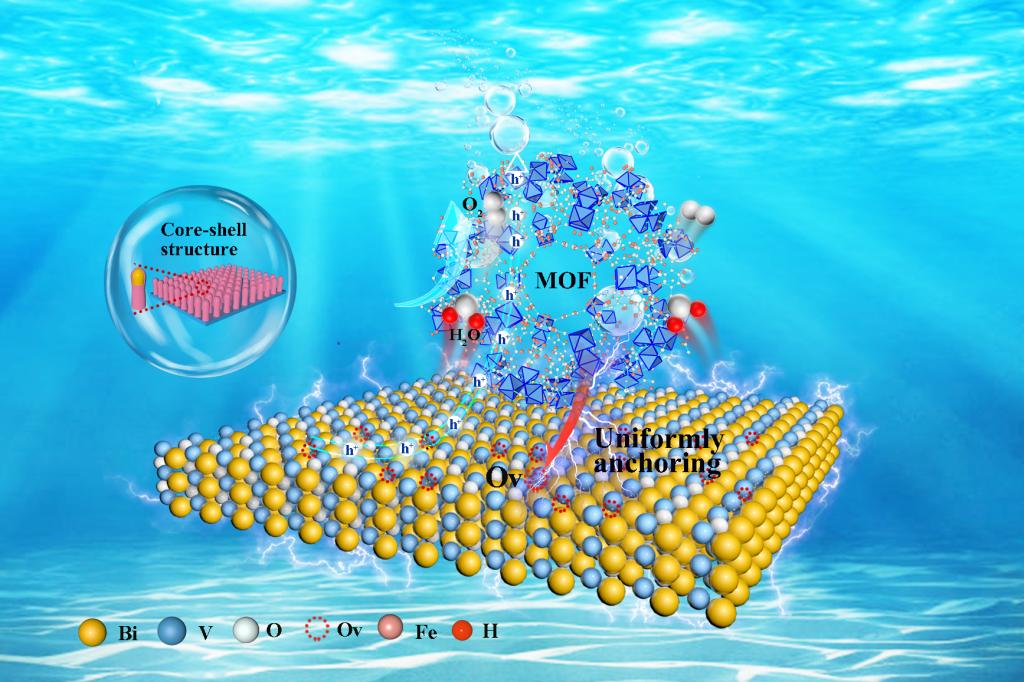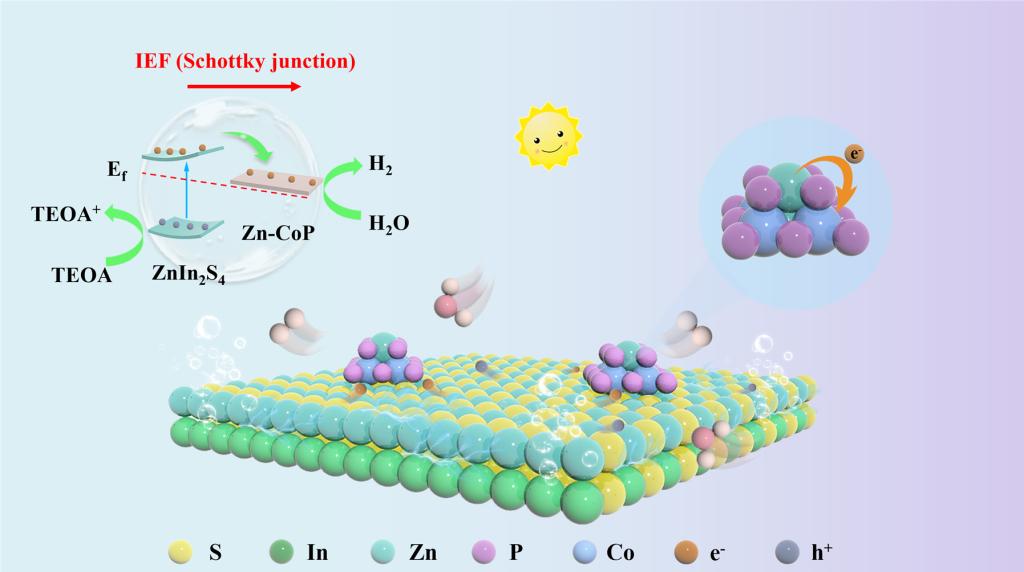Dr. Xiong Xianqiang from the School of Pharmaceutical and Chemical Engineering of TU has recently published three research papers in top-tier international journals—Advanced Materials (IF=27.4), Applied Catalysis B: Environmental and Energy (IF=20.3), and Separation and Purification Technology (IF=8.2). These studies have made significant progress in photoelectrochemical interface optimization, structural regulation of transition metal phosphides, and the construction of novel heterojunction catalysts. All papers list TU as the first affiliation, with Dr. Xiong serving as the corresponding author. The key findings are as follows:
Innovative Electrochemical Etching Method: An innovative electrochemical etching method was proposed to generate high-concentration oxygen vacancy sites on the BiVO₄ surface, enabling molecular-level epitaxial growth of metal-organic frameworks (MOFs). The resulting composite photoelectrode exhibits an ideal interface with high photocurrent density and excellent stability, providing new insights into the application of defect engineering in photoelectrocatalysis. (Adv. Mater., 2025, 2417589).
Zn-Doping-Regulated CoP Catalyst: Zn doping was used to redistribute the electron density of Co in CoP, enhancing its affinity for H₂O molecules, optimizing the desorption process of H* intermediates, and accelerating surface reaction kinetics. This work opens a new pathway for developing non-noble metal cocatalysts. (Appl. Catal. B Environ., 2025, 367, 125098).
Novel Ternary ZnIn₂S₄@Bi₂S₃@CuCo₂S₄ Heterostructure: A novel ternary ZnIn₂S₄@Bi₂S₃@CuCo₂S₄ heterostructure was designed to overcome the inherent limitations of traditional Type-I heterojunctions, achieving efficient separation of photogenerated charge carriers and offering a new strategy for enhancing photocatalytic performance. (Sep. Purif. Technol., 2025, 354, 129444).

Figure 1: Schematic illustration of the BiVO₄/MOF composite photoanode system

Figure 2: Schematic of hydrogen production via the ZnIn₂S₄/Zn-CoP composite photocatalyst
These achievements demonstrated that precise regulation of catalyst structure and composition can significantly improve the activity and stability of photoelectrodes and photocatalysts, providing a solid theoretical foundation and practical guidance for developing more efficient photocatalytic materials and enhancing solar energy utilization efficiency.
Links to Papers:
1. https://doi.org/10.1002/adma.202417589
2. https://doi.org/10.1016/j.apcatb.2025.125098
3. https://doi.org/10.1016/j.seppur.2024.129444